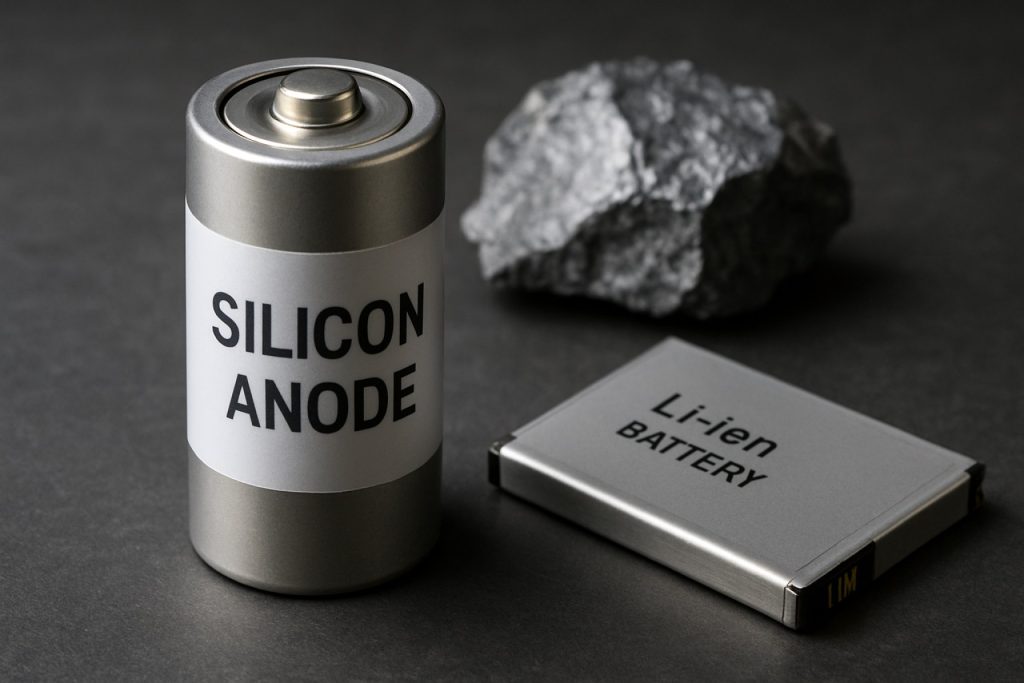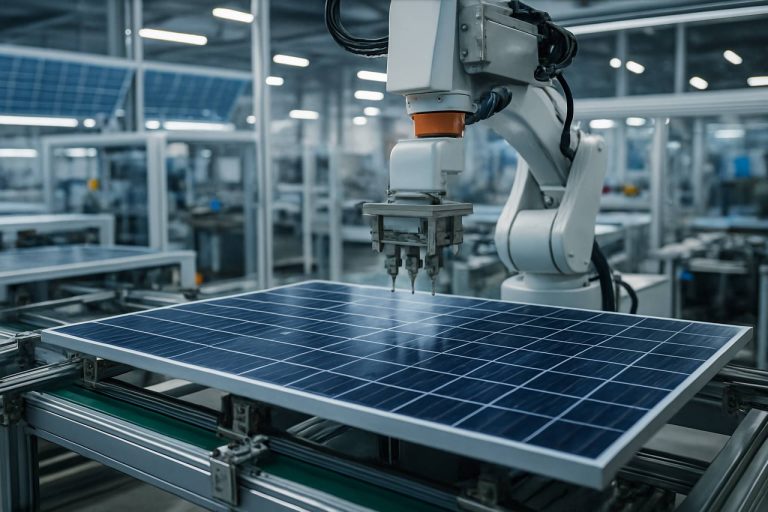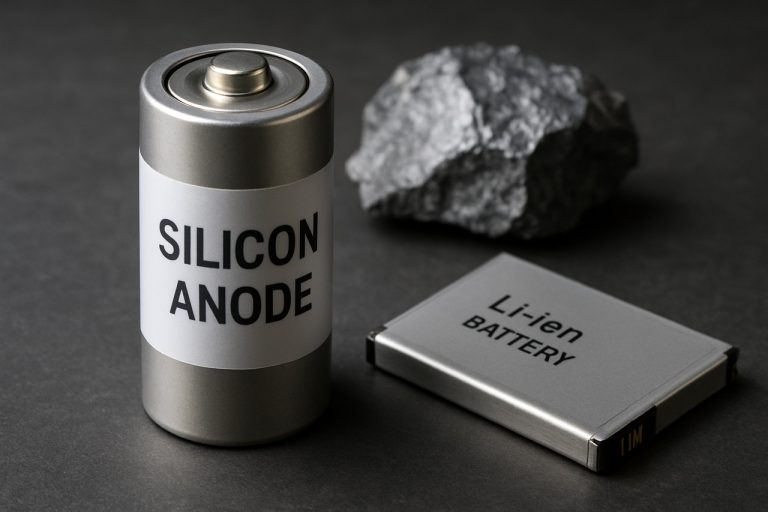
Silicon Anode and Next-Generation Battery Materials in 2025: Unleashing a New Era of Energy Storage. Explore How Advanced Materials Are Set to Transform Battery Performance, Market Dynamics, and Global Supply Chains Over the Next Five Years.
- Executive Summary: Key Trends and 2025 Outlook
- Market Size, Growth Rate, and 2025–2030 Forecasts
- Silicon Anode Technology: Innovations and Commercialization
- Next-Gen Battery Materials: Beyond Silicon—Solid-State, Lithium Metal, and More
- Competitive Landscape: Leading Companies and Strategic Partnerships
- Supply Chain and Raw Material Challenges
- Application Spotlight: Electric Vehicles, Consumer Electronics, and Grid Storage
- Sustainability, Recycling, and Environmental Impact
- Regulatory Landscape and Industry Standards
- Future Outlook: Disruptive Technologies and Market Opportunities Through 2030
- Sources & References
Executive Summary: Key Trends and 2025 Outlook
The transition to silicon anode and next-generation battery materials is accelerating in 2025, driven by the demand for higher energy density, faster charging, and improved cycle life in electric vehicles (EVs) and consumer electronics. Silicon, with its theoretical capacity nearly ten times that of conventional graphite, is at the forefront of this shift. However, challenges such as volumetric expansion and cycle stability have historically limited its widespread adoption. Recent advancements in material engineering and manufacturing processes are now enabling commercial-scale integration of silicon-based anodes.
Several industry leaders are spearheading the commercialization of silicon anode technologies. Amprius Technologies has begun supplying high-energy-density silicon anode cells for aviation and defense applications, reporting energy densities exceeding 450 Wh/kg in 2024, with plans to scale production further in 2025. Sila Nanotechnologies is collaborating with major automotive OEMs to integrate its silicon-dominant anode material into EV batteries, targeting mass-market deployment by mid-2025. Group14 Technologies is ramping up commercial production of its proprietary silicon-carbon composite anode material, with a new manufacturing facility in the U.S. expected to reach full capacity in 2025.
On the cathode side, next-generation materials such as high-nickel NMC, lithium iron phosphate (LFP), and emerging solid-state chemistries are also advancing. Contemporary Amperex Technology Co. Limited (CATL) and LG Energy Solution are investing in research and pilot lines for solid-state and semi-solid-state batteries, aiming for commercial introduction in the latter half of the decade. These efforts are complemented by supply chain investments in advanced silicon and lithium materials by companies such as Albemarle Corporation and Livent Corporation.
Looking ahead, 2025 is expected to mark a pivotal year for silicon anode adoption, with several EV models anticipated to feature silicon-enhanced batteries, offering up to 20-40% higher range and faster charging compared to current graphite-based cells. The competitive landscape is intensifying as battery manufacturers and automakers race to secure supply agreements and scale up next-gen material production. While technical hurdles remain, particularly in long-term durability and cost, the industry consensus is that silicon anode and advanced cathode materials will play a central role in the next wave of battery innovation, shaping the performance and economics of electrified transport and energy storage through the late 2020s.
Market Size, Growth Rate, and 2025–2030 Forecasts
The global market for silicon anode and next-generation battery materials is poised for significant expansion between 2025 and 2030, driven by accelerating demand for high-energy-density batteries in electric vehicles (EVs), consumer electronics, and grid storage. Silicon anodes, in particular, are gaining traction as a promising alternative to conventional graphite anodes due to their substantially higher theoretical capacity—up to ten times greater—enabling longer battery life and faster charging.
By 2025, several leading battery manufacturers are expected to scale up commercial production of silicon-anode-based lithium-ion cells. Panasonic Corporation has announced plans to incorporate silicon-based anode materials in its next-generation EV batteries, targeting a 20% increase in energy density by the mid-2020s. Similarly, Samsung SDI and LG Energy Solution are investing in silicon anode R&D, with pilot lines and partnerships aimed at mass production within this timeframe.
On the supply side, material innovators such as Sila Nanotechnologies and Amprius Technologies are scaling up manufacturing of advanced silicon anode materials. Sila, for example, is supplying its silicon-dominant anode material to consumer electronics and is targeting automotive-scale production by 2025, with a new facility in Washington state designed for high-volume output. Amprius, meanwhile, is commercializing silicon nanowire anodes, reporting energy densities exceeding 450 Wh/kg in prototype cells—well above current industry averages.
The market size for silicon anode materials is projected to reach several billion USD by 2030, with compound annual growth rates (CAGR) frequently cited in the 30–40% range by industry participants. This rapid growth is underpinned by commitments from automakers such as Tesla, Inc., which has publicly discussed integrating silicon into its battery chemistries to improve range and reduce costs. In parallel, next-generation solid-state battery materials—such as lithium metal anodes and advanced electrolytes—are progressing toward commercialization, with companies like QuantumScape Corporation and Solid Power, Inc. targeting automotive qualification and initial deployments before 2030.
Looking ahead, the 2025–2030 period is expected to see a transition from pilot-scale to mass production of silicon anode and other next-gen battery materials, with supply chain investments and strategic partnerships accelerating adoption. The competitive landscape will likely be shaped by the ability of manufacturers to address challenges such as cycle life, swelling, and cost, while meeting the surging demand from the EV and energy storage sectors.
Silicon Anode Technology: Innovations and Commercialization
Silicon anode technology is at the forefront of next-generation lithium-ion battery development, promising significant improvements in energy density and cycle life compared to conventional graphite anodes. As of 2025, the industry is witnessing a transition from laboratory-scale breakthroughs to commercial-scale adoption, driven by both established battery manufacturers and innovative startups.
Silicon’s theoretical capacity—approximately ten times that of graphite—has long been recognized, but its practical application has been hindered by challenges such as volumetric expansion during cycling, which leads to rapid capacity fade. Recent advances in material engineering, such as the use of silicon nanostructures, composites, and protective coatings, are mitigating these issues and enabling more robust performance in real-world applications.
Several major players are now actively commercializing silicon anode materials. Amprius Technologies is a notable leader, having developed silicon nanowire anodes that have demonstrated energy densities exceeding 500 Wh/kg in prototype cells. The company is scaling up production at its Fremont, California facility, with plans to supply high-energy batteries for aerospace and electric vehicle (EV) markets. Similarly, Sila Nanotechnologies has partnered with automotive OEMs to integrate its silicon-dominant anode material into commercial EV batteries, with the first vehicles expected to reach consumers in the next few years.
On the global stage, Contemporary Amperex Technology Co. Limited (CATL), the world’s largest battery manufacturer, announced the development of its “condensed matter” battery, which incorporates silicon-based anode materials to achieve higher energy densities. CATL’s roadmap includes mass production and integration into both automotive and aviation applications by the mid-2020s. Panasonic Corporation and Samsung SDI are also investing in silicon anode research, with pilot lines and partnerships aimed at accelerating commercialization.
Looking ahead, the outlook for silicon anode technology is increasingly optimistic. Industry analysts expect that by 2025–2027, silicon-enhanced batteries will begin to see broader adoption in premium consumer electronics, electric vehicles, and emerging sectors such as electric aviation. The ongoing scale-up of manufacturing, combined with continued improvements in cycle life and cost, positions silicon anode materials as a key enabler of next-generation battery performance. As more companies bring products to market, the competitive landscape is likely to intensify, driving further innovation and cost reductions across the sector.
Next-Gen Battery Materials: Beyond Silicon—Solid-State, Lithium Metal, and More
The pursuit of next-generation battery materials is intensifying as the limitations of conventional graphite anodes and liquid electrolytes become more apparent in the race for higher energy density, faster charging, and improved safety. Silicon anodes, solid-state electrolytes, and lithium metal technologies are at the forefront of this transformation, with 2025 poised to be a pivotal year for both commercialization and large-scale validation.
Silicon anodes, which can theoretically store up to ten times more lithium than graphite, are now moving from laboratory breakthroughs to real-world applications. However, challenges such as volumetric expansion and cycle life have historically hindered their adoption. In 2025, several industry leaders are expected to launch or scale up silicon-enhanced batteries. Amprius Technologies is notable for its silicon nanowire anode technology, which has already demonstrated energy densities exceeding 450 Wh/kg in commercial cells, targeting aviation and high-performance electric vehicles. Sila Nanotechnologies is another key player, supplying its silicon-dominant anode material to consumer electronics and, starting in 2025, to automotive partners, with claims of a 20% increase in energy density over conventional cells.
Beyond silicon, solid-state batteries are gaining momentum as a solution to safety and performance bottlenecks. These batteries replace flammable liquid electrolytes with solid materials, enabling the use of lithium metal anodes and further boosting energy density. QuantumScape is advancing its solid-state lithium-metal battery technology, with plans for automotive prototype deliveries in 2025. Solid Power is also scaling up production of solid-state cells, collaborating with major automakers to validate performance in real-world conditions.
Other next-gen chemistries are also under active development. Contemporary Amperex Technology Co. Limited (CATL), the world’s largest battery manufacturer, is investing in sodium-ion and semi-solid state batteries, aiming for commercial deployment in the next few years. Panasonic Corporation and LG Energy Solution are both exploring high-nickel cathodes and advanced electrolyte formulations to complement silicon and lithium metal anodes, targeting higher energy densities and longer lifespans.
Looking ahead, 2025 is expected to mark a transition from pilot-scale to early mass production for several of these technologies. While silicon anode batteries will likely see the broadest near-term adoption, solid-state and lithium metal batteries are anticipated to enter niche markets, such as premium electric vehicles and aviation, before wider rollout. The next few years will be critical for demonstrating cost-effectiveness, manufacturability, and real-world durability, setting the stage for a new era in battery innovation.
Competitive Landscape: Leading Companies and Strategic Partnerships
The competitive landscape for silicon anode and next-generation battery materials is rapidly evolving as automakers, battery manufacturers, and material innovators race to commercialize advanced chemistries. Silicon anodes, which promise significantly higher energy density than conventional graphite, are at the forefront of this transformation. As of 2025, several leading companies and strategic partnerships are shaping the sector’s trajectory.
Amprius Technologies is a prominent player, having developed silicon nanowire anode technology that enables batteries with energy densities exceeding 500 Wh/kg. The company has secured supply agreements with aerospace and electric vehicle (EV) manufacturers, and in 2024 announced plans to expand its manufacturing capacity in the United States to meet growing demand (Amprius Technologies).
Sila Nanotechnologies is another key innovator, supplying its silicon-dominant anode material to major partners. In 2024, Sila began commercial shipments of its Titan Silicon™ anode material, which is being integrated into the next generation of Mercedes-Benz electric vehicles. Sila’s Moses Lake, Washington facility is scaling up to produce enough material for hundreds of thousands of EVs annually (Sila Nanotechnologies).
Group14 Technologies has also emerged as a leader, focusing on silicon-carbon composite anodes. The company’s partnership with Porsche AG and its investment from SK Inc. underscore the strategic importance of its technology. Group14’s commercial-scale BAM-2 factory in Washington is expected to come online in 2025, supporting both automotive and consumer electronics markets (Group14 Technologies).
On the global stage, Panasonic Holdings Corporation and LG Energy Solution are actively developing silicon-based anode materials for their next-generation lithium-ion cells, with pilot production lines and collaborations with material startups. Contemporary Amperex Technology Co. Limited (CATL), the world’s largest battery manufacturer, is also investing in silicon anode research and has announced plans to incorporate silicon-rich chemistries in future product lines.
Strategic partnerships are central to progress. Automakers such as Mercedes-Benz Group AG and Porsche AG are directly investing in material startups to secure supply and accelerate integration. Meanwhile, established material suppliers like Umicore and BASF SE are expanding their portfolios to include silicon anode materials, often through joint ventures or licensing agreements.
Looking ahead, the competitive landscape is expected to intensify as pilot projects transition to mass production. The next few years will likely see further consolidation, with leading companies leveraging strategic partnerships to secure market share and drive down costs, positioning silicon anode and next-gen battery materials as critical enablers of the EV and energy storage revolution.
Supply Chain and Raw Material Challenges
The transition to silicon anode and next-generation battery materials is intensifying supply chain and raw material challenges as the industry moves into 2025 and beyond. Silicon, with its theoretical capacity nearly ten times that of graphite, is a key focus for battery manufacturers seeking higher energy densities. However, the rapid scaling of silicon anode production introduces new complexities in sourcing, processing, and integrating high-purity silicon and other advanced materials.
A primary challenge is the availability of battery-grade silicon. While metallurgical-grade silicon is abundant, the ultra-high purity and specific particle morphologies required for anode applications are less common and more expensive to produce. Major silicon producers such as Ferroglobe and Wacker Chemie AG are expanding their capabilities to supply the battery sector, but the supply chain remains vulnerable to price volatility and geopolitical risks, particularly as much of the world’s silicon production is concentrated in China.
In 2025, several battery manufacturers are moving from pilot to commercial-scale silicon anode integration. Amprius Technologies, a leader in silicon nanowire anode technology, is ramping up production at its new Colorado facility, aiming to address both supply and cost bottlenecks. Similarly, Sila Nanotechnologies is partnering with automakers and cell manufacturers to commercialize its silicon-dominant anode materials, with a new plant in Washington state expected to begin large-scale shipments in 2025. These expansions are designed to localize supply chains and reduce reliance on overseas sources.
Beyond silicon, next-generation battery chemistries—such as solid-state, lithium-sulfur, and sodium-ion—introduce additional raw material dependencies. For example, solid-state batteries require high-purity lithium and specialized solid electrolytes, while sodium-ion batteries depend on sodium salts and hard carbon, which have their own supply chain considerations. Companies like QuantumScape and Contemporary Amperex Technology Co. Limited (CATL) are investing in upstream partnerships and material innovation to secure these critical inputs.
Looking ahead, the industry is expected to face continued pressure on raw material sourcing, with potential bottlenecks in both silicon and other advanced materials. Strategic investments in domestic production, recycling, and alternative material development are likely to be key trends through the late 2020s. Collaboration between battery manufacturers, material suppliers, and automakers will be essential to ensure a resilient and sustainable supply chain for silicon anode and next-generation battery technologies.
Application Spotlight: Electric Vehicles, Consumer Electronics, and Grid Storage
The rapid evolution of silicon anode and next-generation battery materials is poised to significantly impact key application sectors in 2025 and the following years, particularly electric vehicles (EVs), consumer electronics, and grid storage. Silicon anodes, which offer a theoretical capacity nearly ten times greater than conventional graphite, are at the forefront of this transformation, promising higher energy densities and faster charging capabilities.
In the electric vehicle sector, several major automakers and battery manufacturers are advancing silicon anode integration. Tesla, Inc. has publicly discussed its roadmap to incorporate silicon into its battery cells, aiming to increase range and reduce costs. The company’s 4680 cell design, which partially utilizes silicon in the anode, is expected to enter broader production in 2025, with the goal of supporting next-generation vehicle platforms. Similarly, Panasonic Corporation—a key supplier to Tesla—has announced ongoing development of silicon-rich anode batteries, targeting commercial deployment in EVs within the next few years.
Other battery innovators, such as Amprius Technologies, Inc., are already supplying high-silicon anode batteries for specialized applications, including aviation and high-performance drones, and are scaling up production for broader mobility markets. Sila Nanotechnologies Inc. has partnered with consumer electronics brands and automakers, with its silicon anode material slated for integration into commercial products starting in 2025. Sila’s announced collaboration with Mercedes-Benz Group AG aims to deliver higher energy density batteries for premium EVs, with pilot production underway.
In consumer electronics, the drive for longer battery life and faster charging is accelerating adoption of silicon anode materials. Samsung Electronics Co., Ltd. and LG Energy Solution are both investing in next-generation battery chemistries, including silicon-based anodes, to power smartphones, wearables, and laptops with improved performance. These advancements are expected to reach commercial devices as early as 2025, with incremental improvements in energy density and cycle life.
Grid storage applications are also beginning to benefit from next-gen battery materials. Companies like Enovix Corporation are developing silicon-anode batteries with enhanced safety and longevity, targeting stationary storage systems that require high cycle stability. As renewable energy integration accelerates, the demand for advanced batteries with higher capacity and longer service life is expected to grow, with silicon anode solutions positioned to play a key role.
Looking ahead, the commercialization of silicon anode and other advanced battery materials is set to accelerate across these sectors in 2025 and beyond. While challenges remain—such as managing silicon’s volume expansion and ensuring manufacturability—ongoing investments and partnerships by industry leaders signal a strong outlook for widespread adoption in EVs, consumer electronics, and grid storage.
Sustainability, Recycling, and Environmental Impact
The transition to silicon anode and next-generation battery materials is closely intertwined with sustainability, recycling, and environmental impact considerations. As the battery industry accelerates the adoption of silicon-based anodes—driven by their potential to significantly increase energy density—manufacturers and material suppliers are increasingly focused on minimizing the environmental footprint of both production and end-of-life processes.
Silicon, while abundant in the Earth’s crust, presents unique sustainability challenges when used in battery anodes. The production of high-purity silicon nanoparticles or nanowires often requires energy-intensive processes. Companies such as Amprius Technologies and Sila Nanotechnologies are actively developing silicon anode materials with improved manufacturing efficiency and lower carbon emissions. For example, Amprius Technologies claims its silicon nanowire anode technology can deliver up to 500 Wh/kg, while also exploring recycling pathways for silicon-based electrodes.
Recycling infrastructure for next-generation batteries is evolving to accommodate new chemistries. Traditional lithium-ion battery recycling processes are being adapted to recover not only lithium, cobalt, and nickel, but also silicon and other advanced materials. Umicore, a global materials technology company, is expanding its recycling capabilities to address the growing diversity of battery chemistries, including those with silicon anodes. Similarly, Redwood Materials is scaling up operations in North America to recover and reuse a broader range of battery materials, with a focus on circularity and reducing the need for virgin resource extraction.
Environmental impact assessments for silicon anode batteries are ongoing, with early studies suggesting that, while silicon anodes can reduce the overall material intensity per unit of stored energy, the environmental benefits depend on the sourcing and processing methods. Companies like Sila Nanotechnologies emphasize the use of less hazardous chemicals and more sustainable supply chains in their production processes. Furthermore, industry groups such as Battery Council International are working to establish best practices and standards for the recycling and safe disposal of next-generation battery materials.
Looking ahead to 2025 and beyond, the outlook for sustainable silicon anode and next-gen battery materials is promising but contingent on continued investment in green manufacturing, robust recycling systems, and transparent supply chains. As regulatory pressures mount and consumer demand for environmentally responsible products grows, industry leaders are expected to further integrate sustainability into the core of battery innovation and deployment.
Regulatory Landscape and Industry Standards
The regulatory landscape for silicon anode and next-generation battery materials is rapidly evolving as governments and industry bodies respond to the accelerating commercialization of advanced energy storage technologies. In 2025, the focus is on ensuring safety, sustainability, and supply chain transparency, while supporting innovation to meet the growing demand for high-performance batteries in electric vehicles (EVs), consumer electronics, and grid storage.
Key regulatory frameworks are being updated to address the unique challenges posed by silicon anode chemistries, which offer higher energy density but can introduce new safety and lifecycle considerations. The International Organization for Standardization (ISO) and the International Electrotechnical Commission (IEC) are actively developing and revising standards for lithium-ion batteries, including those with silicon-based anodes, focusing on performance, safety, and environmental impact. These standards are critical for harmonizing testing protocols and facilitating international trade.
In the United States, the UL Solutions (formerly Underwriters Laboratories) continues to update its UL 2580 and UL 1973 standards, which cover batteries for EVs and stationary applications, respectively. These standards are being adapted to account for the thermal and mechanical behaviors of silicon-rich anodes, which can differ from traditional graphite-based cells. The U.S. Department of Energy is also funding research and pilot programs to accelerate the safe deployment of next-gen battery materials, with a focus on domestic supply chain resilience.
In Europe, the European Automobile Manufacturers’ Association (ACEA) and the European Chemicals Agency (ECHA) are collaborating to ensure that new battery chemistries comply with the EU Battery Regulation, which came into force in 2023 and is being phased in through 2027. This regulation mandates strict requirements for carbon footprint, recycled content, and end-of-life management, directly impacting the adoption of silicon anode materials by requiring full lifecycle traceability and responsible sourcing.
Industry consortia such as the Global Battery Alliance are working to establish best practices and voluntary standards for responsible sourcing and circularity, which are increasingly being referenced by regulators. Leading manufacturers, including Amprius Technologies and Sila Nanotechnologies, are actively engaging with regulatory bodies to ensure their silicon anode products meet or exceed evolving safety and sustainability standards.
Looking ahead, the regulatory environment is expected to become more stringent, with increased emphasis on transparency, recyclability, and the environmental impact of next-generation battery materials. Companies that proactively align with these standards are likely to gain a competitive advantage as the market for advanced batteries expands through the latter half of the decade.
Future Outlook: Disruptive Technologies and Market Opportunities Through 2030
The period through 2025 and the following years is poised to witness significant advancements in silicon anode and next-generation battery materials, driven by the urgent demand for higher energy density, faster charging, and improved cycle life in electric vehicles (EVs) and consumer electronics. Silicon anodes, in particular, are at the forefront due to their theoretical capacity—approximately ten times greater than conventional graphite anodes. However, challenges such as volumetric expansion and cycle degradation have historically limited their commercial adoption.
Several industry leaders are now making tangible progress toward overcoming these barriers. Amprius Technologies has begun commercial shipments of silicon nanowire anode batteries, reporting energy densities exceeding 450 Wh/kg, a significant leap over traditional lithium-ion cells. Their technology is being evaluated for aerospace and high-performance mobility applications, with plans to scale production capacity in the United States by 2025. Similarly, Sila Nanotechnologies has partnered with major automotive OEMs to integrate its silicon-dominant anode material into EV batteries, targeting mass-market deployment in the second half of the decade.
On the supply chain front, Group14 Technologies is constructing large-scale manufacturing facilities for its proprietary silicon-carbon composite anode material, aiming to supply both automotive and consumer electronics sectors. The company’s roadmap includes gigawatt-hour-scale production by 2025, supporting the anticipated surge in demand as automakers seek to extend EV range and reduce charging times.
Beyond silicon, other next-generation materials are gaining traction. Solid Power and QuantumScape are advancing solid-state battery technologies that utilize lithium metal anodes, promising even higher energy densities and enhanced safety. Both companies have announced pilot production lines and partnerships with leading automakers, with commercial prototypes expected to emerge in the latter half of the 2020s.
Looking ahead, the market for advanced anode materials is projected to expand rapidly as manufacturers transition from pilot to mass production. The integration of silicon and other novel materials is expected to enable EVs with ranges exceeding 600 km per charge and charging times under 20 minutes, reshaping consumer expectations and accelerating electrification. As these technologies mature, supply chain localization and sustainable sourcing of raw materials will become critical, with industry stakeholders investing in domestic manufacturing and recycling initiatives to secure long-term growth.
Sources & References
- Amprius Technologies
- Group14 Technologies
- Contemporary Amperex Technology Co. Limited (CATL)
- Albemarle Corporation
- LG Energy Solution
- QuantumScape Corporation
- Amprius Technologies
- Sila Nanotechnologies
- Porsche AG
- SK Inc.
- Group14 Technologies
- Panasonic Holdings Corporation
- LG Energy Solution
- Umicore
- BASF SE
- Wacker Chemie AG
- Umicore
- Redwood Materials
- Battery Council International
- International Organization for Standardization
- UL Solutions
- European Automobile Manufacturers’ Association
- European Chemicals Agency



